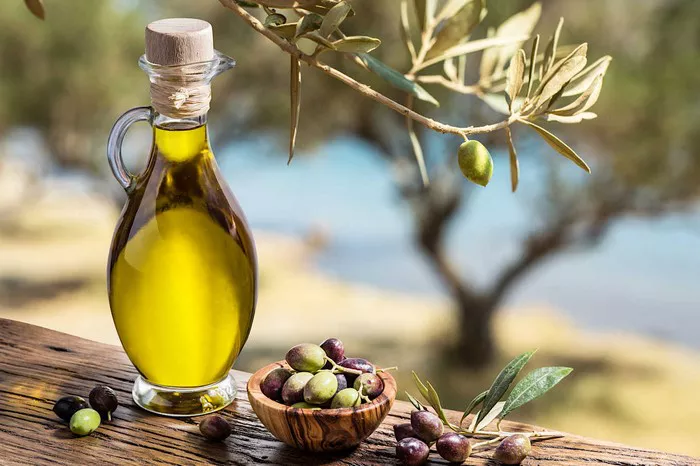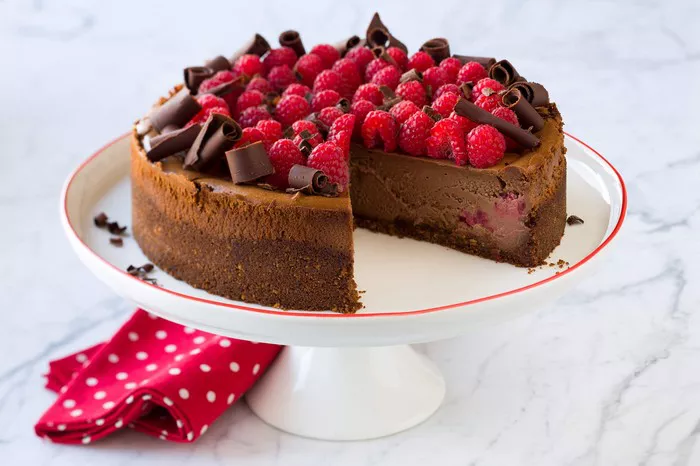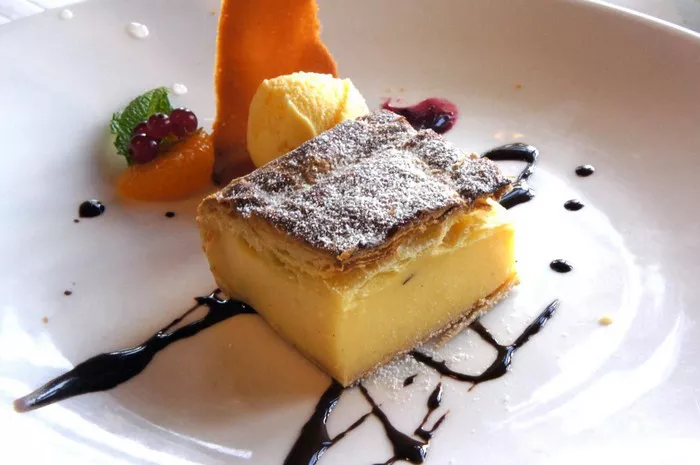Chocolate mousse is a luxurious, creamy dessert that has gained worldwide popularity due to its rich, velvety texture and intense chocolate flavor. It is an indulgent treat that is perfect for special occasions, family gatherings, or a sweet after-meal indulgence. But what exactly is chocolate mousse, and what makes it so unique? In this article, we will explore the origins, ingredients, preparation methods, and variations of this beloved dessert.
The Origins of Chocolate Mousse
Mousse, which is the French word for “foam,” was originally a savory dish. Early mousse recipes date back to the 18th century, where they were made from meat, fish, or vegetables. Over time, the concept of mousse evolved, and by the 19th century, it began to take on a sweet form, particularly in French cuisine. Chocolate mousse, as we know it today, emerged in the early 1900s.
The dessert became especially popular in the 1920s when it started appearing in French patisseries. Its smooth texture and airiness made it an instant hit. Over time, chocolate mousse spread across the globe and became a favorite dessert in many cultures.
Ingredients of Chocolate Mousse
The classic chocolate mousse is made with just a few key ingredients, but it is the technique of preparing these ingredients that creates its signature texture. Here are the basic ingredients that go into making chocolate mousse:
Chocolate: The primary ingredient in chocolate mousse is, of course, chocolate. Most recipes use dark chocolate for its rich, intense flavor, although milk chocolate or even white chocolate can be used for a different taste.
Heavy Cream: Heavy cream, or whipping cream, is essential for giving the mousse its creamy texture. The cream is whipped to stiff peaks and is then folded into the melted chocolate, which helps create the mousse’s light and airy consistency.
Eggs: Eggs, specifically egg yolks, are often used to enrich the mousse and add depth of flavor. In some recipes, egg whites are also beaten and folded into the mixture to help give the mousse its light, fluffy texture.
Sugar: A small amount of sugar is usually added to balance the bitterness of the dark chocolate and provide a subtle sweetness.
Butter: Some recipes include butter to add richness and smoothness to the texture.
Vanilla Extract: A touch of vanilla extract is often added to enhance the overall flavor profile of the mousse.
How Chocolate Mousse is Made
Making chocolate mousse is relatively simple, though it requires some patience to ensure the perfect texture. Here is a basic overview of the preparation process:
Melt the Chocolate: Start by melting the chocolate, either in a heatproof bowl over simmering water (a method called double boiling) or in the microwave. The key is to melt it gently to avoid burning it. Once melted, let it cool slightly.
Whip the Cream: In a separate bowl, whip the heavy cream until stiff peaks form. Be careful not to overwhip, as this can cause the cream to turn into butter.
Prepare the Egg Yolks (Optional): Some recipes call for egg yolks to be whisked together with sugar and then gently cooked. This step is important for creating a smooth, custard-like texture. However, if you are making a no-cook version, this step can be skipped.
Combine the Ingredients: Once the chocolate has cooled slightly, fold it into the whipped cream. If using egg whites, beat them to stiff peaks and gently fold them into the mixture as well. This helps to add air and make the mousse light and fluffy.
Chill the Mousse: Once everything is combined, transfer the mousse into serving dishes or glasses. Refrigerate the mousse for several hours to allow it to set and firm up. The mousse should have a soft, airy texture once it is ready to serve.
Different Variations of Chocolate Mousse
While the classic chocolate mousse is delicious on its own, there are many variations that can be made to suit different tastes and dietary preferences. Here are a few popular variations:
1. White Chocolate Mousse
Instead of dark or milk chocolate, white chocolate mousse uses white chocolate as the main ingredient. White chocolate has a much sweeter and creamier flavor, and it pairs well with fruit or nuts for added texture. White chocolate mousse is a great alternative for those who prefer a less intense chocolate flavor.
2. Vegan Chocolate Mousse
Vegan chocolate mousse is a dairy-free and egg-free version of the classic dessert. It often uses coconut milk or another non-dairy milk as a base and incorporates avocado or silken tofu to provide creaminess. The use of plant-based ingredients makes this mousse a suitable choice for vegans or those with dairy allergies.
3. Mocha Mousse
Mocha mousse is a variation that combines the rich flavor of chocolate with the bold taste of coffee. By adding brewed coffee or espresso to the mousse, the dessert gains a deeper, more complex flavor. Mocha mousse is perfect for coffee lovers who want to enjoy a sweet and satisfying treat.
4. Chocolate Mousse with Fruit
To enhance the richness of chocolate mousse, fresh fruit can be incorporated into the dessert. Strawberries, raspberries, or bananas are common choices to pair with chocolate mousse. The fruit can be folded into the mousse or used as a garnish on top, adding a fresh and vibrant contrast to the creamy chocolate.
5. Chocolate Mousse with Liquor
For an adult twist, some recipes call for the addition of liquor, such as rum, brandy, or Grand Marnier. The alcohol infuses the mousse with a unique flavor and adds complexity to the dessert. This variation is often served as an after-dinner treat.
Serving and Presentation Ideas
Chocolate mousse can be served in a variety of ways, depending on the occasion and personal preference. Here are some popular ideas for presenting chocolate mousse:
Individual Cups: One of the most common ways to serve chocolate mousse is in individual cups or glasses. This allows each guest to have their own portion and makes for an elegant presentation.
Layered Desserts: For a visually appealing dessert, you can layer chocolate mousse with other ingredients such as fruit, whipped cream, or crumbled cookies. This adds texture and flavor while creating a stunning display.
Chocolate Mousse Cake: For a more elaborate presentation, chocolate mousse can be used as the filling for a mousse cake. The mousse is layered between sponge cake or a cookie crust, creating a decadent dessert that is perfect for celebrations.
Toppings: Garnishing your chocolate mousse with toppings like fresh berries, grated chocolate, whipped cream, or crushed nuts adds an extra touch of flavor and texture.
Tips for Perfect Chocolate Mousse
While chocolate mousse is simple to make, there are a few tips that can help ensure your mousse turns out perfectly:
Use High-Quality Chocolate: Since chocolate is the star ingredient in this dessert, using high-quality chocolate is essential. Look for chocolate that is at least 60-70% cocoa for the best flavor.
Don’t Overwhip the Cream: Be sure to whip the cream just until stiff peaks form. Overwhipping the cream can cause it to separate and affect the texture of the mousse.
Chill the Mousse Properly: Allow the mousse to chill for at least 3-4 hours to allow it to set properly. If you’re in a hurry, you can refrigerate it for a shorter time, but it won’t have the same texture as when it’s fully chilled.
Experiment with Flavors: Don’t be afraid to experiment with different flavors, such as adding spices like cinnamon or chili for a unique twist. You can also infuse the cream with herbs or zest before whipping it.
Conclusion
Chocolate mousse is a delicious and versatile dessert that can be made in many different ways to suit a variety of tastes. Whether you prefer the classic version, a vegan option, or a fruit-infused variation, chocolate mousse is sure to satisfy any sweet tooth. With its rich flavor, creamy texture, and simple ingredients, it remains one of the most beloved desserts worldwide. The next time you want to impress your guests or treat yourself, consider making chocolate mousse—it’s a dessert that never goes out of style.
Related topics


























